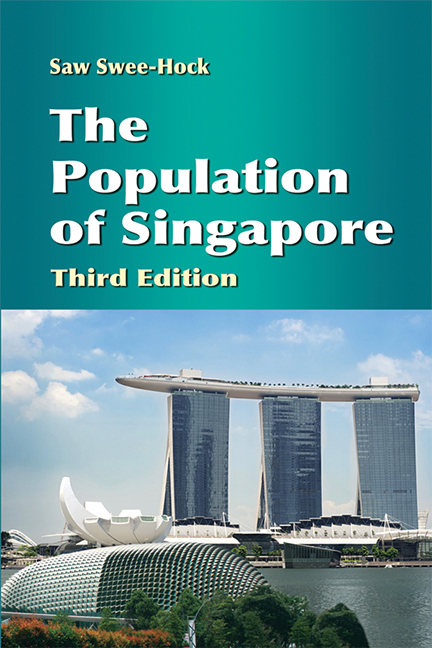Book contents
- Frontmatter
- Contents
- List of Tables
- List of Figures
- Preface
- Preface to Second Edition
- Preface to Third Edition
- 1 Background
- 2 Population Growth and Distribution
- 3 Changing Population Structure
- 4 Migration
- 5 Mortality Trends and Differentials
- 6 Marriage Trends and Patterns
- 7 Divorce Trends and Patterns
- 8 Fertility Trends and Differentials
- 9 Family Planning, Abortion and Sterilisation
- 10 Fertility Policies and Programmes
- 11 Immigration Policies and Programmes
- 12 Labour Force
- 13 Future Population Trends
- Appendix
- Bibliography
- Index
- Frontmatter
- Contents
- List of Tables
- List of Figures
- Preface
- Preface to Second Edition
- Preface to Third Edition
- 1 Background
- 2 Population Growth and Distribution
- 3 Changing Population Structure
- 4 Migration
- 5 Mortality Trends and Differentials
- 6 Marriage Trends and Patterns
- 7 Divorce Trends and Patterns
- 8 Fertility Trends and Differentials
- 9 Family Planning, Abortion and Sterilisation
- 10 Fertility Policies and Programmes
- 11 Immigration Policies and Programmes
- 12 Labour Force
- 13 Future Population Trends
- Appendix
- Bibliography
- Index
Summary
Until August 1965 Singapore and Peninsular Malaysia were treated as a single unit governed by common laws in matters relating to migration, and persons entering one territory could proceed to the other without any restriction at all. These two countries have been important areas of migration since the establishment of British colonial rule in the early nineteenth century. The large and sustained immigration was engendered by the demand for labour in the public works and agricultural plantations, by the good prospects for trade and commerce, and by the law and order attendant on British rule. Such forces of attraction, coupled with liberal immigration policies, were reinforced by equally strong repelling forces in the immigrants’ countries of origin. Natural calamities, political upheavals, poverty and population pressure were the decisive factors that induced the immigrants to leave their countries.
There were essentially three main streams of immigration into Singapore before World War II, namely, the northern stream from China, the western stream, from the Indian sub-continent, and the less important southern stream from the then Dutch East Indies. In the early days, the immigrants from these regions would usually leave their families behind and come to Singapore not as permanent settlers but as “birds-of-passage”, sending regular remittances home, making occasional visits and eventually returning to their countries after acquiring some wealth, or on retirement. In the course of time, however, an increasing number remained permanently, although the transient character of the population persisted for many decades until the outbreak of war in Singapore in late 1941. Since then, the Japanese occupation and the subsequent strict immigration control have put an end to large-scale immigration, while at the same time the pre-war immigrants were increasingly regarding Singapore as their permanent home.
CHINESE MIGRATION
While Chinese contacts with Singapore date back to ancient times, it was after the establishment of British rule on the island in the early nineteenth century that marked the beginning of a long period of continuous Chinese migration. Despite the opposition of the Chinese Government to the emigration of its nationals to overseas territories, thousands of Chinese managed to come into the country during the first half of the nineteenth century.1 By far the largest group were those who came to work as labourers in the pepper and tapioca farms and the gambier and sugar-cane plantations.
- Type
- Chapter
- Information
- The Population of Singapore , pp. 55 - 80Publisher: ISEAS–Yusof Ishak InstitutePrint publication year: 2012



